I recently reread the Agatha Christie classic in anticipation of the new film release. I am going to attempt to review them — spoiler free — together here.
The novel was published in 1934 and was the tenth featuring Hercules Poirot. He was by then a well-known character for Christie. She was also experimenting with the typical murder mystery structure. Rather than a “locked room” mystery wherein the victim is found dead in a room where no one could have gotten in or out, Christie traps everyone together on a snowbound train. The victim, the suspects, and the detective are all stuck in the “locked room.”
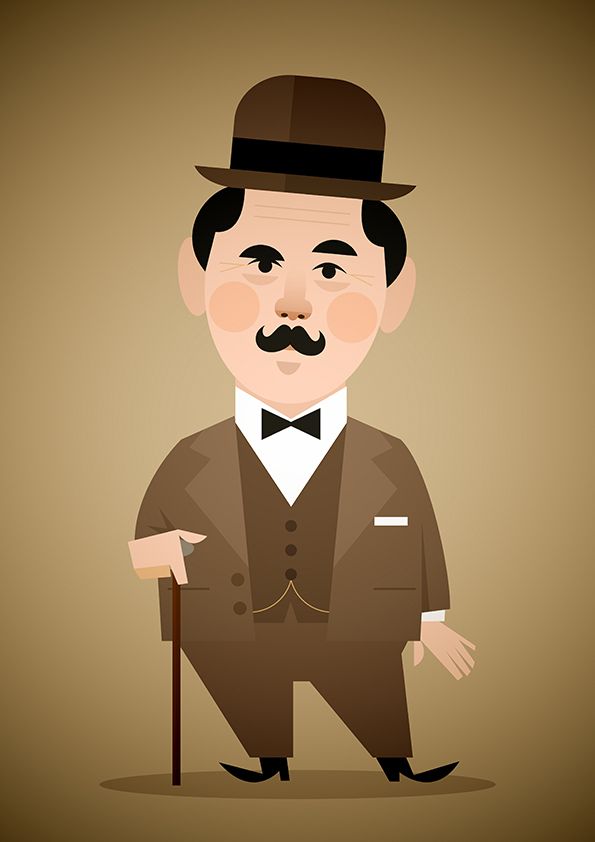
Hercules Poirot, trying to enjoy a few days rest, is instantly thrust into the case and begins his methodical questioning of the passengers. He is fastidious and cryptic to an outside observer. In this novel, he is “assisted” by the manager of the train company and a doctor ,who are continually puzzled at his deductions. For the reader, they provide a representative who can bridge the gap between casual observer and the eagle eyes of Poirot. They also add a touch of levity, allowing readers to feel clever — “I’m might not be Poirot, but even I know that was a dumb idea.”
The book is about 90% dialogue. It is mostly Poirot interviewing the passengers and then explaining his thoughts to his assistants. It seems ready made to become a play or a film.
The new movie version, directed by and starring Kenneth Branagh is problematic but it was much better than the trailers led me to believe. Rather than using the dialogue to his advantage, most of it was rewritten and remolded. While the main points of the solution are accurate to the book, Branagh has tried to make the reveal scene more intense, with potential for violence. This take on the confession scene felt out-of-place and forced, rather than a buildup of tension. And visually it felt like a joke. Branagh placed them along one side of a table, like The Last Supper. 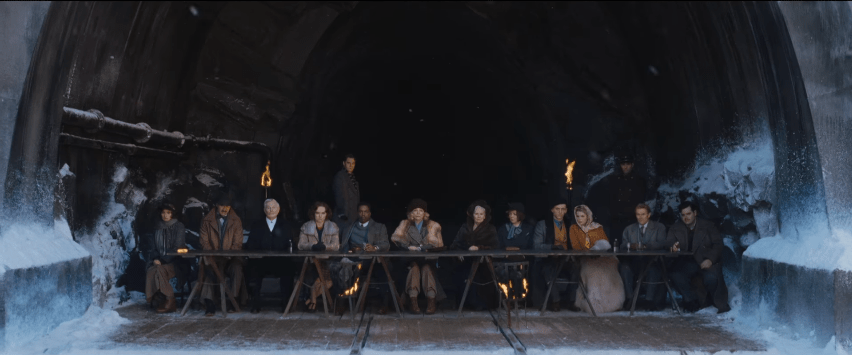
If it was meant to be symbolically related to the film’s story, it fell flat. The image made me chuckle rather than ponder.
This was only one of the scenes that felt like it was in the wrong setting. He interviews passengers in random places, like a table set outside in the freezing cold, or in the supplies car, with a door open to a precipice. There is even a scene with Poirot strutting ON TOP of the train like a caged animal, for no apparent reason. Perhaps Branagh wanted to avoid a claustrophobic feeling, but that’s sort of the point, isn’t it? We too are riders trapped with a murderer.
Then there is the element of Action Poirot. I believe I have read all of the Poirot books, at least once, and I can’t think of a time he used his cane as a weapon or chased, dived, and rolled around on a suspect. Perhaps Branagh was thinking of Sherlock Holmes’ jiu-jitsu and boxing training? Or perhaps he thought this would liven up an otherwise dramatic piece? Since he also chose to alter the manner of the train’s predicament, it probably the latter. Instead of the train being stopped snow-covered tracks, in this adaptation they are hit by an avalanche while crossing a trestle bridge. Somehow, it is strong enough to derail them but not enough to knock them of the bridge.
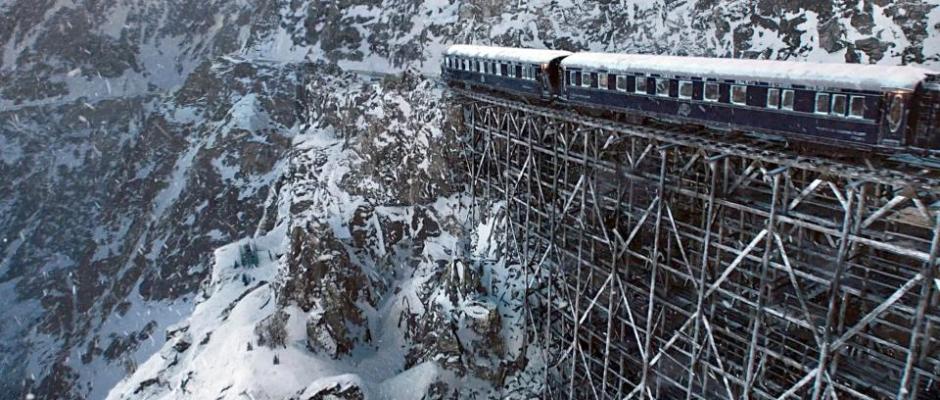
And this mountain pass that the train must navigate looks like the Himalayas, for some reason. It’s overly dramatic and it doesn’t work to heighten any tension or make the situation more somehow dire.
As for the characterization of Poirot himself, Branagh did a passable job. He is a good actor, especially if he can allow himself to share playing space with other talents. There are many notable names in this film, and it was a shame some of them did not get more screen time. There is a long tradition of stacking the deck when adapting this to the screen, and Branagh did the same. The wonderful Olivia Colman had too few moments as did Willem Dafoe. Daisy Ridley and Leslie Odom, Jr., did a fine job but their characters were strangely used in the final cut. Johnny Depp’s villain was too well-trod to be anything interesting.
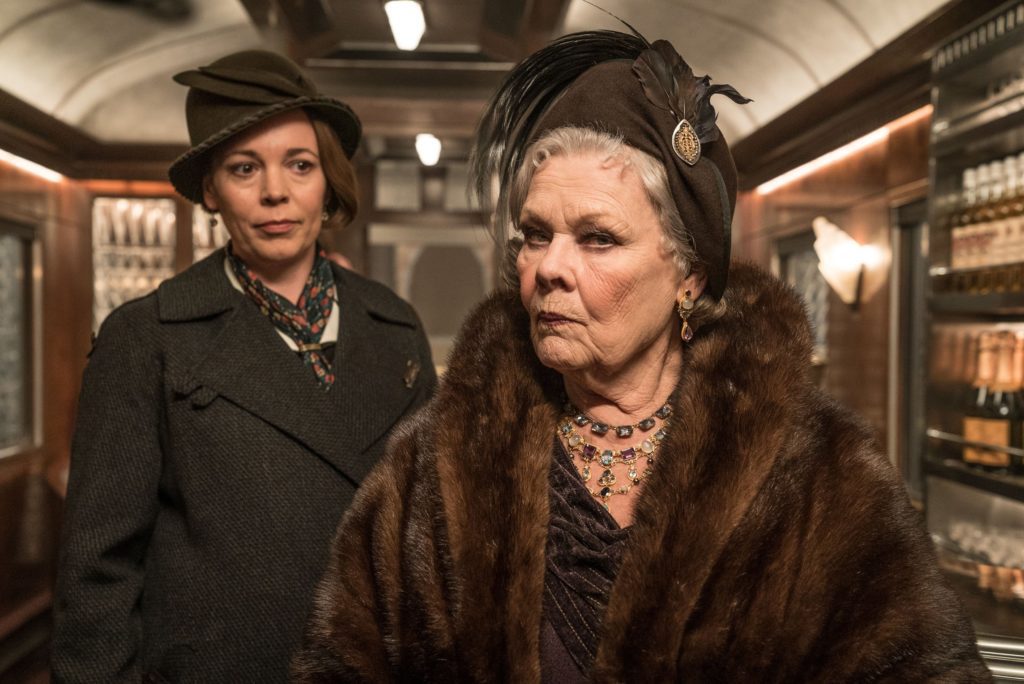
Those who know Poirot know he has an ego. He is extremely good at his job and will make sure the world knows it. However, he is not arrogant to the point of ridiculousness. He is not a clown. He is in all things polite and particular. Branagh’s character became ridiculous at times, slipping into a Clouseau type, albeit with more intelligence. Generations of readers have come to know him as impatient, irritable and even demanding, but never rude and never ostentatious.
Branagh taps into a sort of God complex, over-the-top, savior characterization, particularly in the final scenes. He whips his cape around, backlit by the train engine, appearing like a vision to the waiting passengers. It’s a bit much (Don’t even get me started with that moustache). Yes, I admit, I grew up on the David Suchet Poirot and I can’t help but compare them. But I am also comparing him to the canonical Poirot — the one of Christie’s imagining.
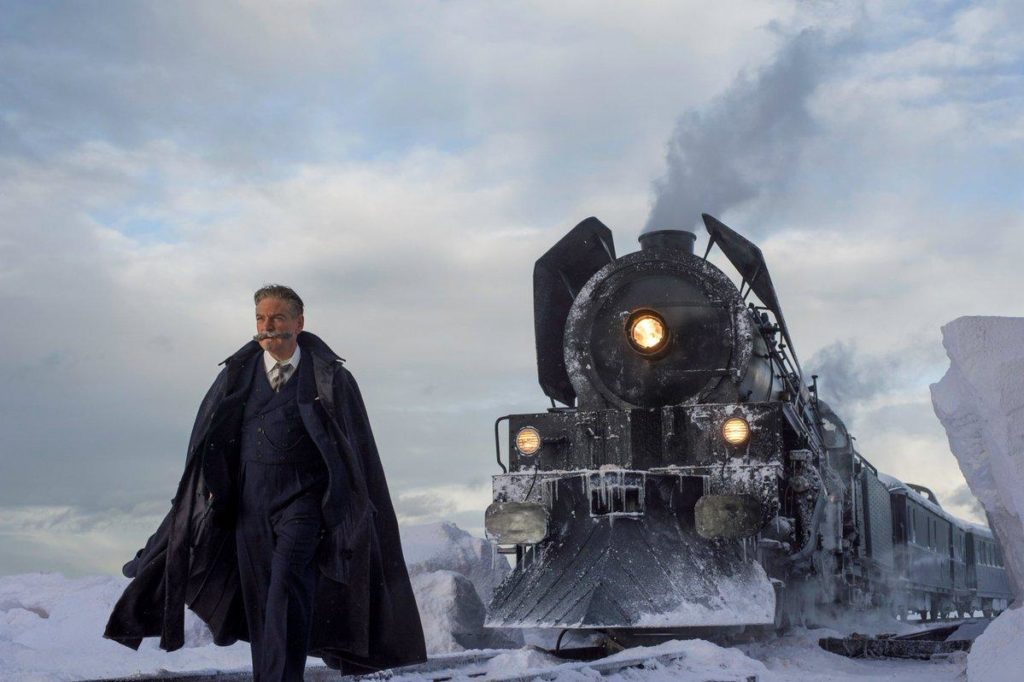
Herein lies the crux of the film’s weaknesses — it doesn’t adhere to the canon, and therefore it makes missteps. Christie always insisted that a very astute reader could conceivably solve her mysteries. The clues were always there. The film’s tagline was “Clues Are Everywhere,” but it cut some of them out entirely. For instance, viewers aren’t told the first name of a character (the reader is told in the book), so when Poirot reveals the owner of a handkerchief it makes no sense. The film also combines two characters to create Doctor Arbuthnot, which would be fine, except that it creates a confusing scene at the final reveal.
Where the film shines is in its production design. The interiors are sumptuous and the costumes are great. Branagh uses a couple of long shots to great effect — once boarding the train and once to show the cramped crime scene. The details of the most luxurious train travel company were cross-checked with multiple historical records and designs. And it shows.
It’s a pretty film, for the most part, but the shine isn’t enough to distract the avid Christie reader from the underlying issues.
My thanks to HarperCollins for the book review copy.
ISBN: 9780062689665
ISBN 10: 0062689665
Imprint: William Morrow Paperbacks
On Sale: 10/10/2017
Trimsize: 5.313 in (w) x 8 in (h) x 0.649 in (d)
Pages: 288
List Price: 14.99 USD
